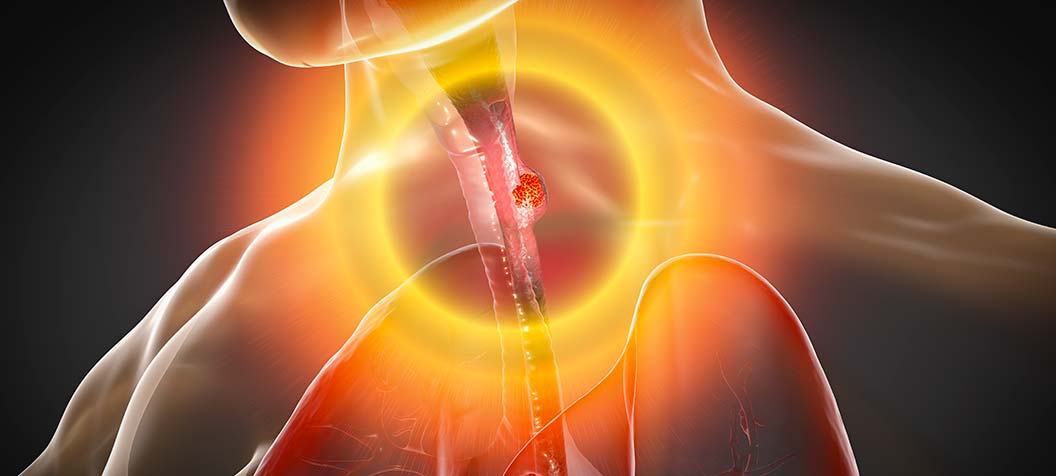esophageal disorders
Chronic esophagitis is a very common condition caused by acid gastric juice regurgitating into the esophagus (reflux).
About 1 in 10 reflux patients will develop a complication called Barrett’s esophagus, in which the normal lining of the esophagus is replaced by one prone to cancer.
Patients with Barrett’s esophagus can develop pre-cancerous changes in the esophageal lining, detectable with endoscopic biopsy.
Developing New Laser Therapy Treatment
UW clinical research programs have developed new treatments using laser and photodynamic therapy that are in the final stages of the FDA approval process.
The photodynamic therapy trial for extremely high-risk patients with high-grade dysplasia in Barrett’s esophagus is now in the final month of a four-year FDA-regulated trial involving more than 30 academic centers around the world.
This therapy destroys the pre-cancerous changes in the Barrett’s lining and restores the patient’s normal esophagus without surgery.
UW pathologists and the UW GI Biopsy Laboratory were recognized as world leaders in this field and were selected to be the sole reference pathology laboratory to prepare and interpret the Barrett’s biopsies—more than 36,000 to date—for this innovative clinical study.
First Important Therapeutic Advance for Barrett's Patients
The preliminary results are extremely promising, indicating that this new therapy will be the first important therapeutic advance for Barrett’s patients since the time-honored but high-risk and debilitating surgical approach.
In addition, research is under way to help prevent the precancerous changes from occurring and to enhance earlier diagnosis when they do.
Our faculty have provided the most convincing and highly cited data in a longitudinal study of Barrett’s esophagus, where the cell biology of the disease, the progression from metaplasia to dysplasia and cancer, was carefully followed.
It has been shown that appropriate intervention can prevent and cure cancer.




